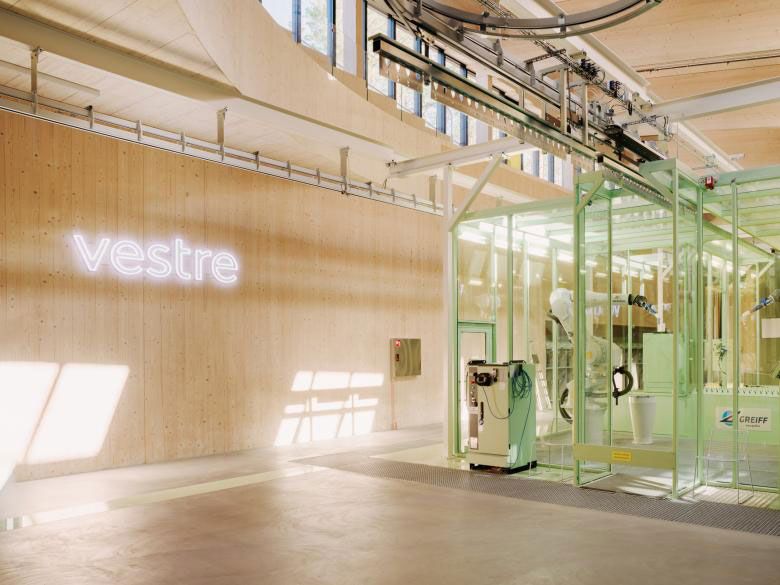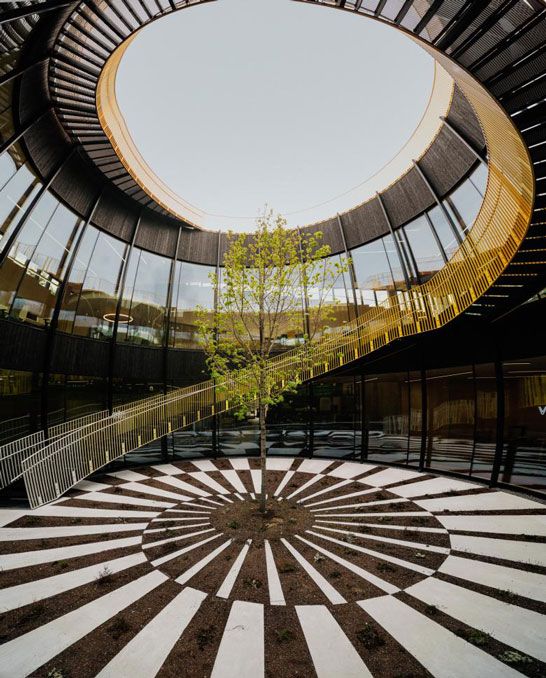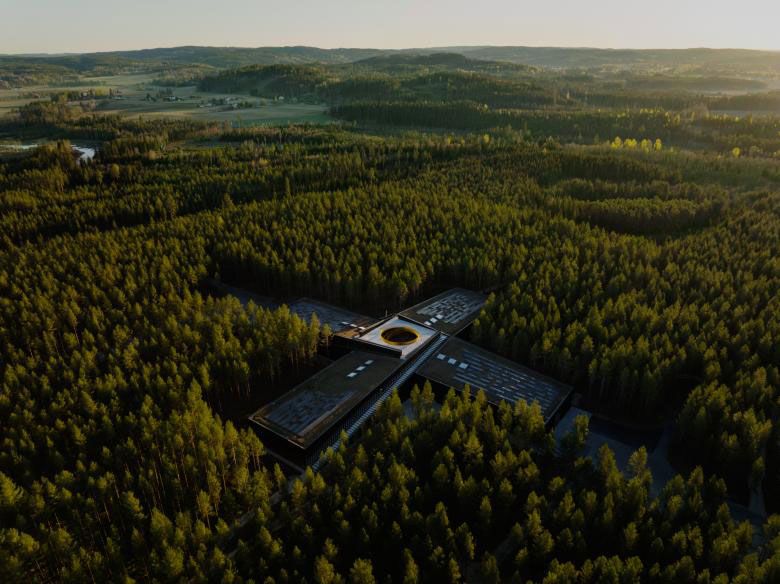Bjarke Ingels Group's most recent project, a production center for Norwegian furniture manufacturer Vestre, claims to be “the world’s most environmentally-friendly factory” located in Norway. Named “The Plus”, the space covers 7,000 square meters of a Norwegian forest on the border with Sweden and is accessible to the public. From the center headquarters, four distinct wings radiate out into the woods, forming the aerial cross shape it is named for.
Vestre is the first furniture manufacturer in the world to declare the carbon emissions footprint of each of its products. Its dedication to sustainability in all aspects of its operations, including building practices, echoes the goals of United Nations Sustainable Development Goals for Industry, Infrastructure, and Innovation, as well as Sustainable Cities and Communities.

The Plus combines Passivhaus sustainable building strategies with a robot-assisted production line, reducing the factory’s energy consumption by up to 90% compared to the usage of a traditional factory. Passivhaus practices are designed to create net-zero buildings, using minimal amounts of energy while maximizing efficiency and occupant comfort.
In the construction of the factory itself, BIG mainly utilized wood. The timber was certified by PEFC, the world’s largest forest certification system and a global umbrella organization working towards sustainable lumber management. The timber is laminated in a process that stores CO2.
900 solar panels on The Plus’ green roof, grown with seeds from the surrounding wooded area, produce 250,000 kilowatt/hr of renewable energy per year. Heat emitted from the production process is captured by geothermal wells and heat pumps to repurpose it.

Overall, The Plus generates 55% lower emissions from energy and materials than a comparable building. A machine-powered assembly line manufactures Vestre’s products more efficiently, saving energy in the production process. Any waste products from the assembly line are recycled for reuse: water is cleaned and filtered, with 90% recycled back into the factory.
However, despite its multitude of sustainability measures, BIG’s work falls just short of achieving net-zero emissions. While it is a pioneer of sustainability in the industrial building sector, calculating emissions from the building’s production process as well as daily operations mean The Plus is not quite “Paris-approved”.

A spokesperson for Vestre says that the factory’s design is intended to incorporate more ideas about sustainable building in the industrial sector, as well as raising awareness among the general population. Lead architect David Zahle said, “The project is very transparent, almost open-source both in terms of how the products are made but also in how we've opened up the facade to bring people closer.” Transparency is a key part of Vestre’s environmental philosophy: The company has started including Environmental Product Declarations to foster environmental accountability among the furniture industry.
Learn more about Vestre and their work with the UN’s SDGs here.
See more stunning photographs of The Plus here.
